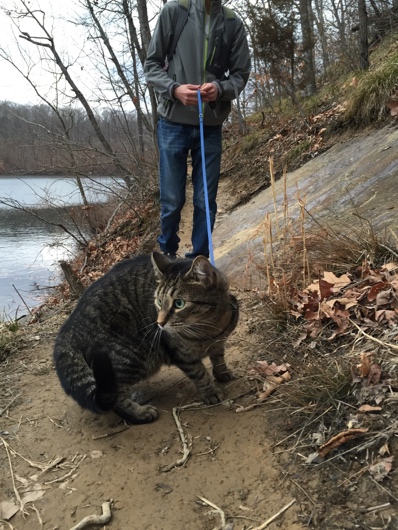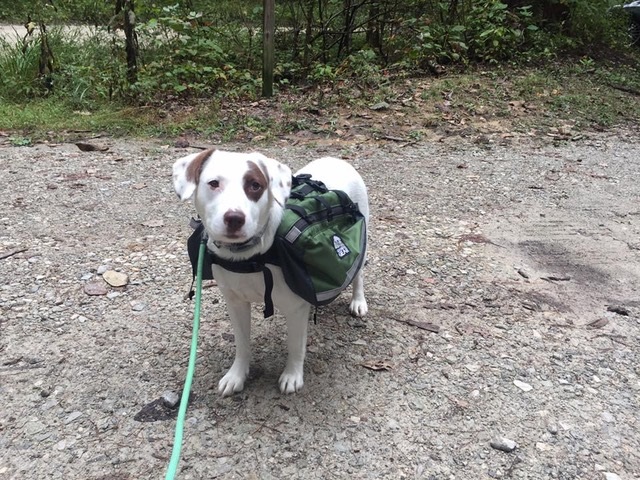 As the weather cools down and the leaves begin to change, it’s the perfect time of year to go hiking and camping. Taking a dog (or cat) camping and hiking can be a great experience but it can also be challenging. Volunteer Olivia Humphreys shares some tips to help you make your next trip outdoors successful.
As the weather cools down and the leaves begin to change, it’s the perfect time of year to go hiking and camping. Taking a dog (or cat) camping and hiking can be a great experience but it can also be challenging. Volunteer Olivia Humphreys shares some tips to help you make your next trip outdoors successful.
Keep your pet on a leash at all times. Even though your dog may stick close by, it’s important to keep them on a leash for several reasons. For one, the forest holds a number of new smells and sounds that could cause your pet to run off, either from fear or curiosity. For another, you never know when you may encounter another dog. While your dog may be friendly, even when on a leash, some dogs are leash aggressive and get territorial when other dogs approach them. If you have your pet on a leash, you can check with the other dog’s owner before introducing your pets.
Bring plenty of water. Water can be heavy to carry, but it’s definitely not an item you want to leave behind. Even though the temperatures may be cooling off, you and your pet still need plenty of water so neither of you get dehydrated. Collapsible water bowls are an inexpensive and efficient way to you water your dog.
 Invest in a dog pack. If you’re a serious backpacker or hiker, you may want to invest in a dog pack so your dog can carry his own food and water. Just make sure it fits properly and isn’t chaffing. In order to make sure your dog will get along fine with the pack, try strapping it onto them for their daily walk a few days before your outing and make adjustments accordingly.
Invest in a dog pack. If you’re a serious backpacker or hiker, you may want to invest in a dog pack so your dog can carry his own food and water. Just make sure it fits properly and isn’t chaffing. In order to make sure your dog will get along fine with the pack, try strapping it onto them for their daily walk a few days before your outing and make adjustments accordingly.
Bring treats and toys. Whenever we stop, my dog likes to eat grass, pinecones…basically anything she can put in her mouth. It’s nice to have pet approved toys for her to chew on and keep her busy.
Trim their nails. If you’re camping and using a sleeping pad, trim and file your pup’s nails before you leave. This will help prevent them from accidentally puncturing your pad.
Choose an appropriate hiking distance and difficulty for your dog. Just because you can walk for five miles (uphill both ways) doesn’t mean your dog can. Puppies, out of shape dogs, and older dogs may have trouble walking long distances and on rough terrain so keep them in mind when you choose a trail.
To set up the best leashing system in camp, tie a rope tautly between two trees at chest height or slightly lower, and clip the leash to the rope with a carabiner. This allows the dog a wider range of movement around the camp and minimizes the amount of items their leash gets caught on.
Good luck and happy hiking!
